There were nowhere near enough buses in 1950s Budapest. The Budapest Bus Workshop, the operator at the time, was forced to operate trailer services. This meant that retired IK 30 buses were converted into trailers and connected to buses on certain routes. A solution, which had always been meant as temporary.
A solution had to be found to the challenges of Budapest public transport. The management of the operating firm could not, or did not want to wait for Ikarus to bring its own articulated bus to market in 1962–64. A solution was needed for the overcrowded lines.
As a result, the management entrusted three young engineers, László Rózsa, Gábor Lassú and Béla Színi with finding a solution. And their answer? To develop on the bus-trailer solutions and build an articulated bus.
Why not double-deckers, after all some had been used in Budapest at the beginning of the 20th century? There were two very different but clear reasons behind the decision. The goal was to create something from the existing vehicle fleet and not design a completely new body. Second, the height of tram and trolley bus wires in the city also limited the height of the solution. It should be noted that Ikarus later did design a double-decker prototype which was tested in Budapest. However, the design did not work too well, and the single bus built according to the design ended up in Pécs.
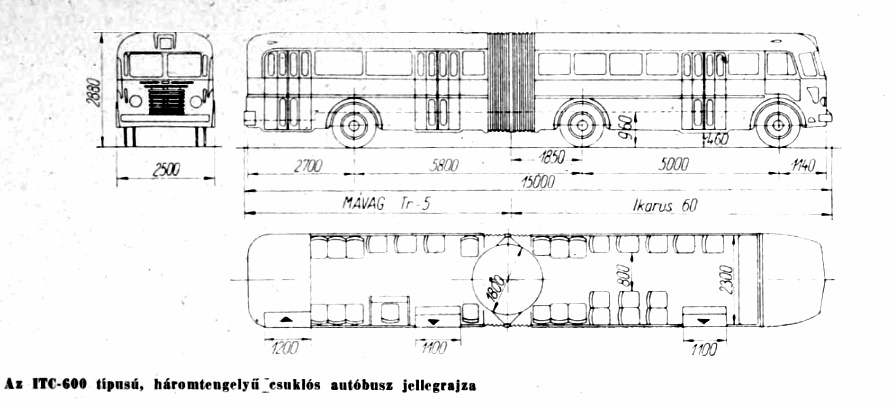
Designs of the bus (Source: Közlekedéstudományi Szemle, 1961/3.)
Nevertheless, the articulated bus is not a Hungarian invention. At the time, the worlds largest manufacturers were already at work developing their own solutions. Tests had been underway in Germany for years. Henschel even unveiled its new bus in 1957. But the earliest articulated buses were even older and had been in use since the 1930s, albeit not in urban settings.
The solution coined by the engineers commissioned by the Budapest Bus Workshop was unique not in the fact that they designed an articulated bus, but ion the fa that they did so by joining to scrapped busses together. The vehicle was a mule of two retired buses. The rear end of an Ikarus 60 was removed and joined with the front end of a TR 5. The two chassis were connected with the rotation system of a rotating loader that was provided by the Red Star Tractor Factory. The engine was taken from an IK620.
The designers had to overcome serious limitations. Not only did they have to create something using only the existing vehicle stock, but their solution also had to fit the needs of Budapest. The buses had to able to turn the same corners as solo buses.
No real plans were drawn up for the design. The engineers discussed problems with the technicians and mechanics as they arose, and sketched ideas onto the workshop walls. The final plans for serialised retrofitting were only drawn up after the first bus had been completed by students t Budapest Technical University.
Work was also hampered by the fact that the chassis of the two selected buses differed greatly. One was riveted, the other welded, and these had to combine with a joint from a rotating loader.
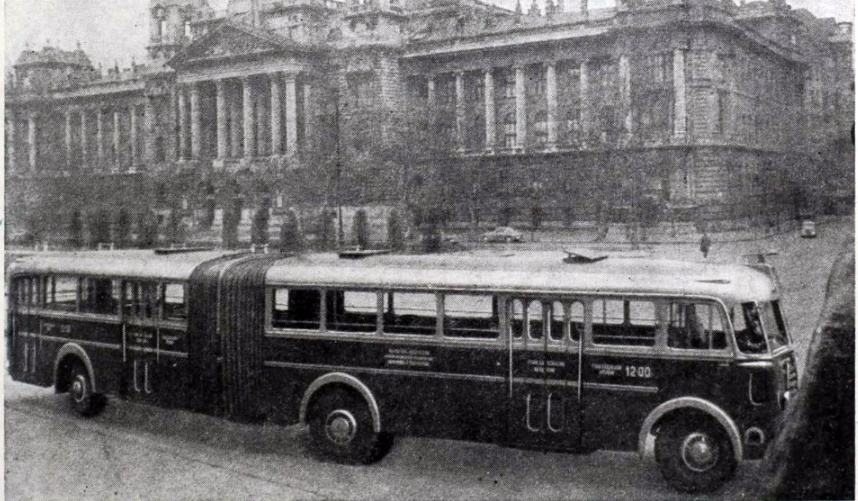
The old-new buses, recycling? (Source: Közlekedéstudományi Szemle, 1961/3)
Ikarus refused to give its name to the created bus; thus, they ran under the classification ITC 600. The first of these vehicles was completed on 2 November 1960. It entered service on 5 November, with the number plate GA-12-00.
Esti Hírlap reported on the new bus on 3 November:
"The first articulated bus has been completed in the main workshop of the Budapest Bus Workshop. The plant's technicians worked tirelessly in honour of 7 November, to ensure the new articulated bus with a capacity of 160 passengers would be completed. The vehicle is slated for tests today, and will enter service on Sunday morning."
Following successful trials, the series retrofitting of retired buses began in the workshop. This also meant that no two buses were alike, as it was not always possible to cut and join the two structures the same way.
As a result of the accelerated work process, Budapest was among the first cities where articulated buses served passengers, despite other manufacturers starting development much earlier.

The even larger, four-axle version of the bus (Source: Autó-Motor, 15 April 1961.)
The buses were a success, and 316 articulated busses were created from retired vehicles by the workshop. The articulated buses could transport more passengers than other vehicles in service at the time. Only 130 people could fit onto a bus with a trailer.
Sadly, not a single example of these early articulated buses has survived to the present day.
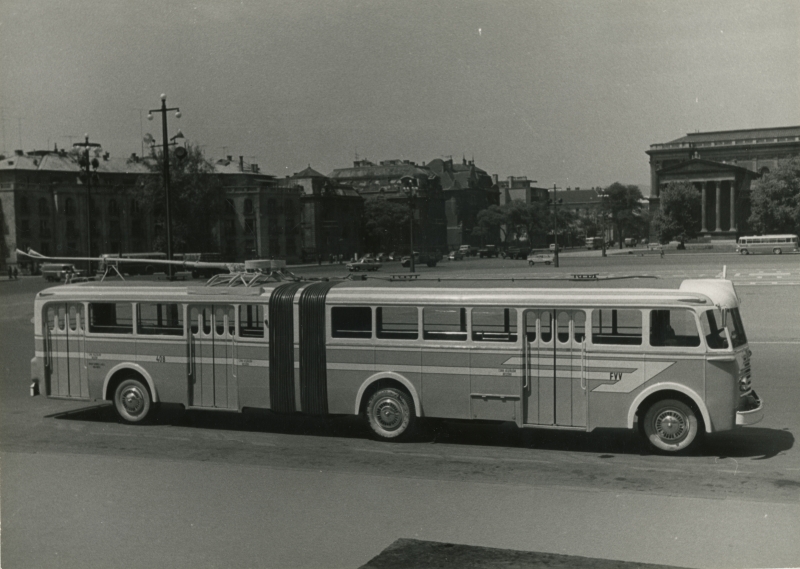
Trolley bus built based on the bus (Source: Hungarian Museum of Technology and Transport, reference no.: TFGY 7249.1)
Following the successful, albeit DIY articulated buses by the Workshop entered service, Ikarus rolled out its own articulated design in 1961. These were first used in Budapest in 1964. The workshop continued to retrofit retired buses until 1967, and these unique vehicles served Budapest until 1969. In fact, the improved version (made from two Ikarus 60 buses) remained in use until 1974.
Cover photo: The new articulated bus (Source: Autó-Motor, 11 November 1960)

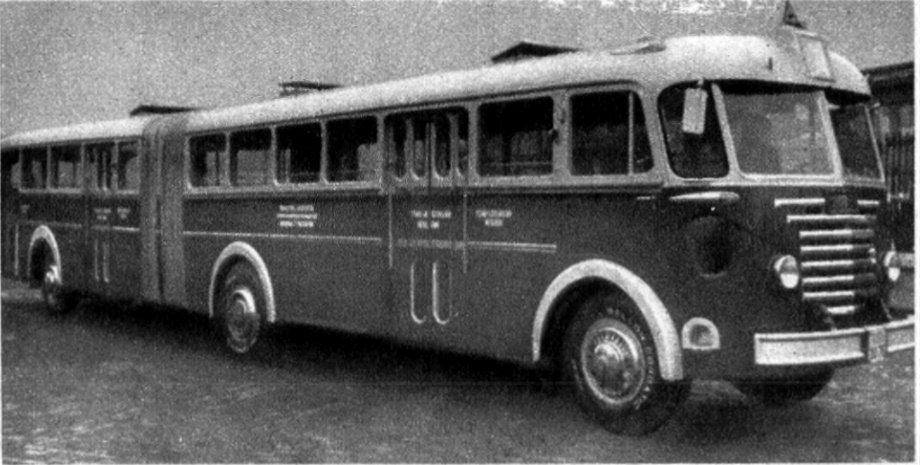

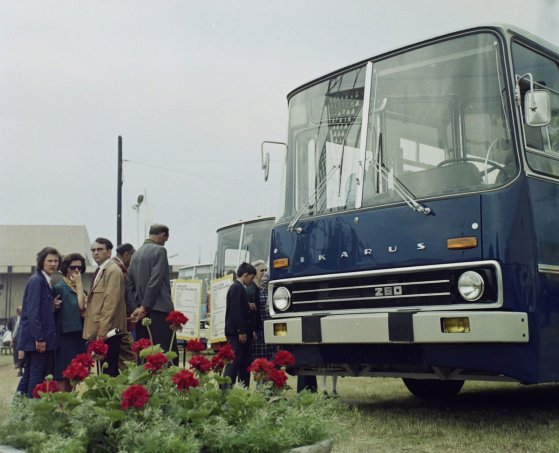
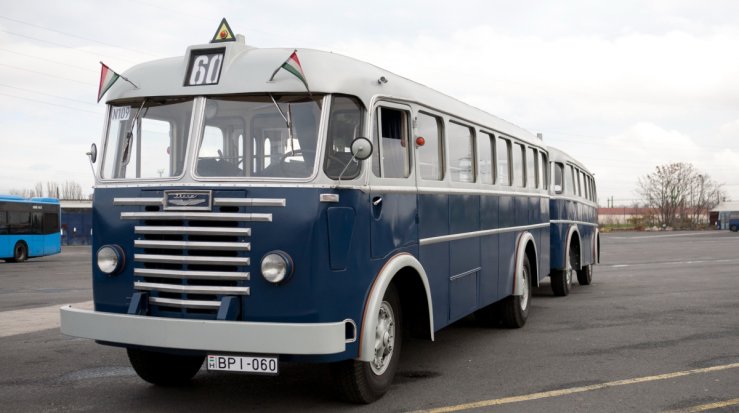
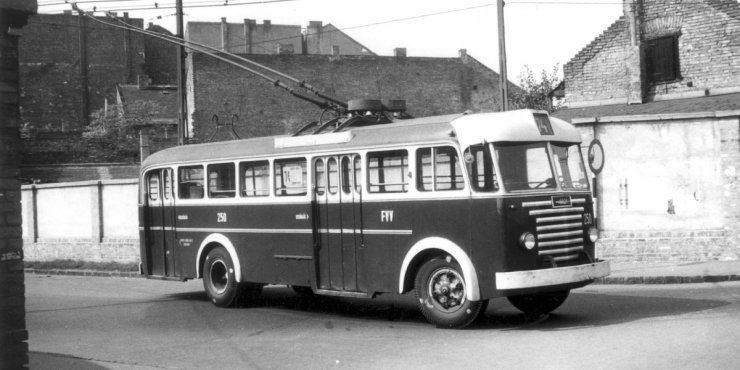

































Hozzászólások
Log in or register to comment!
Login Registration